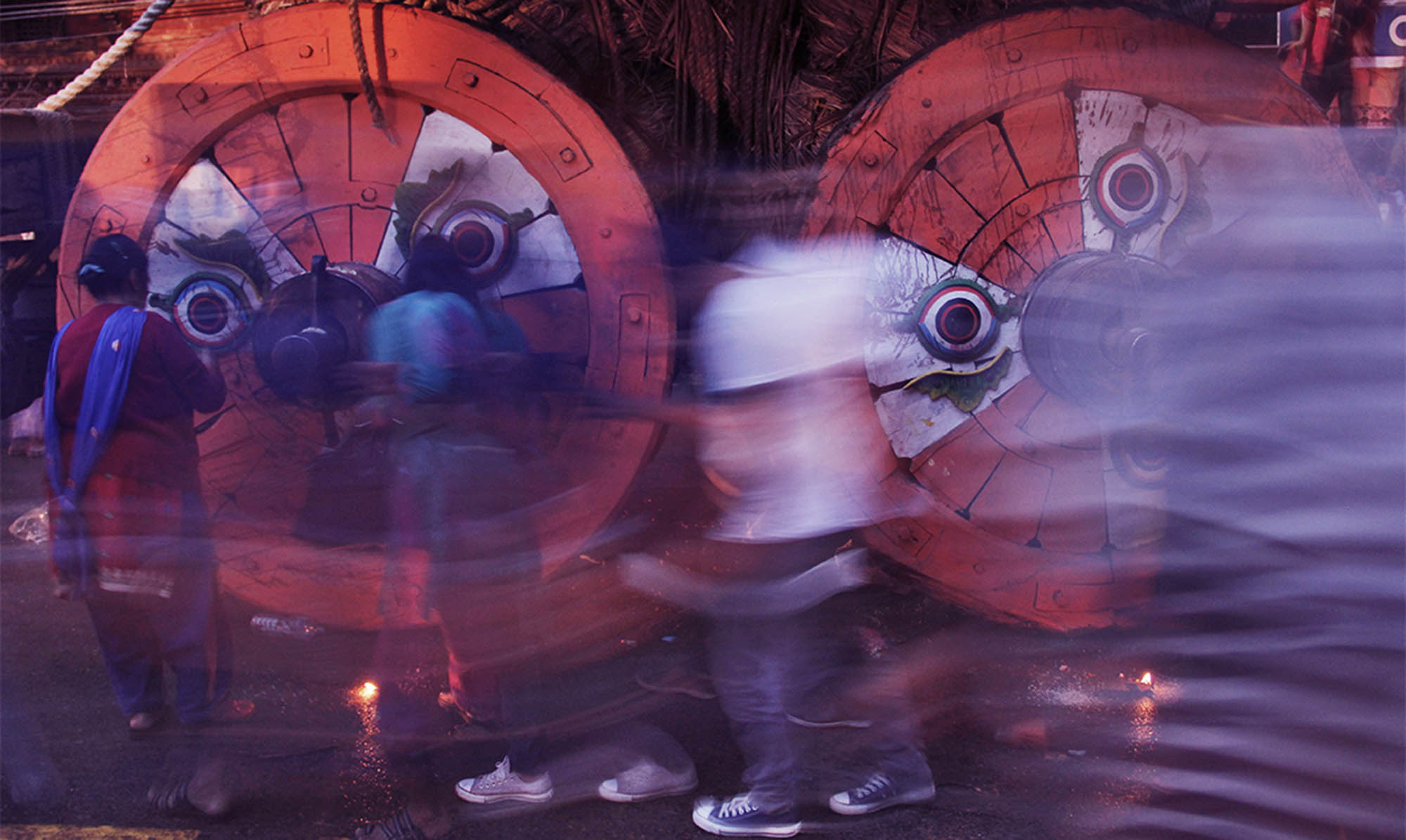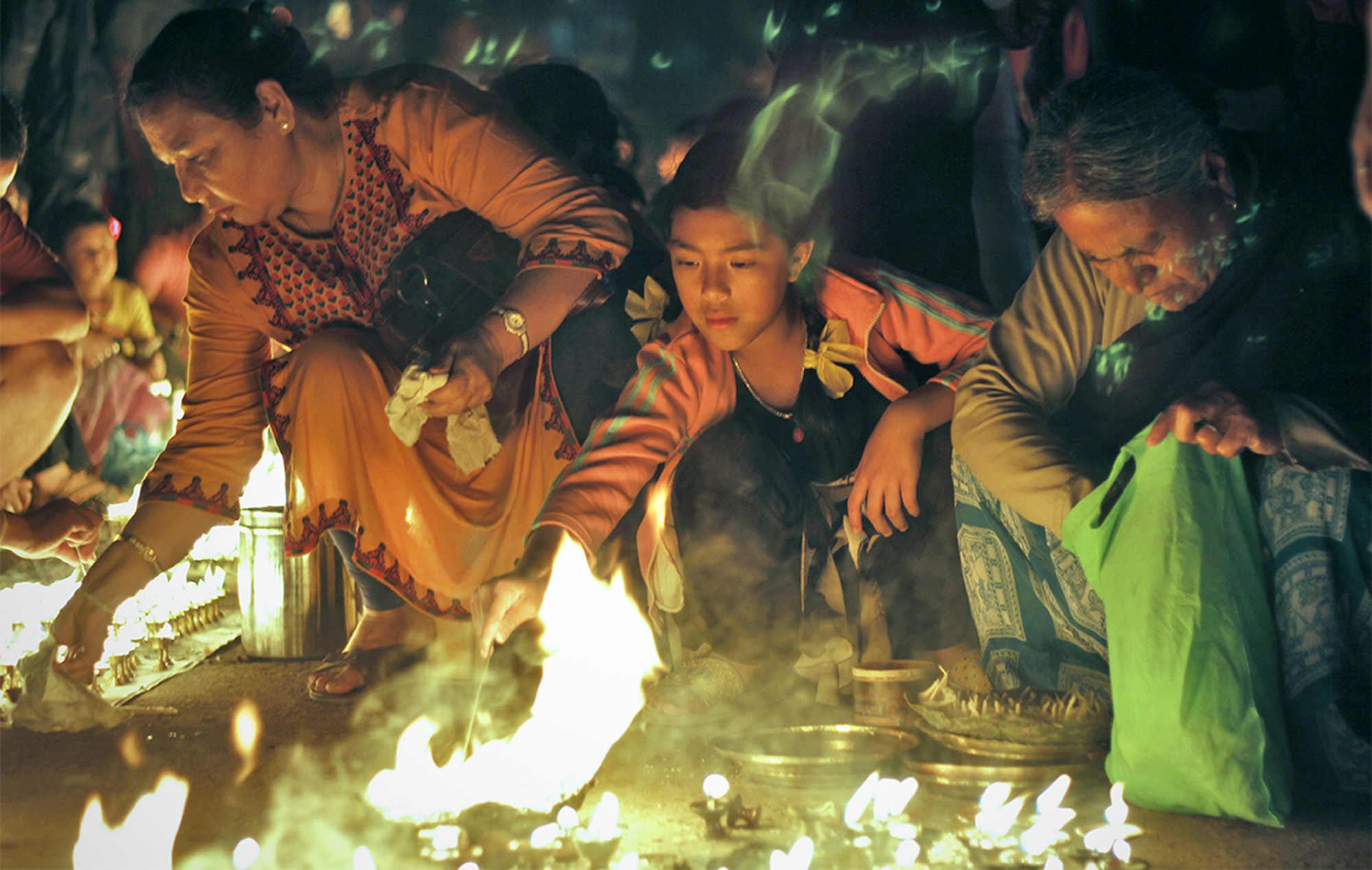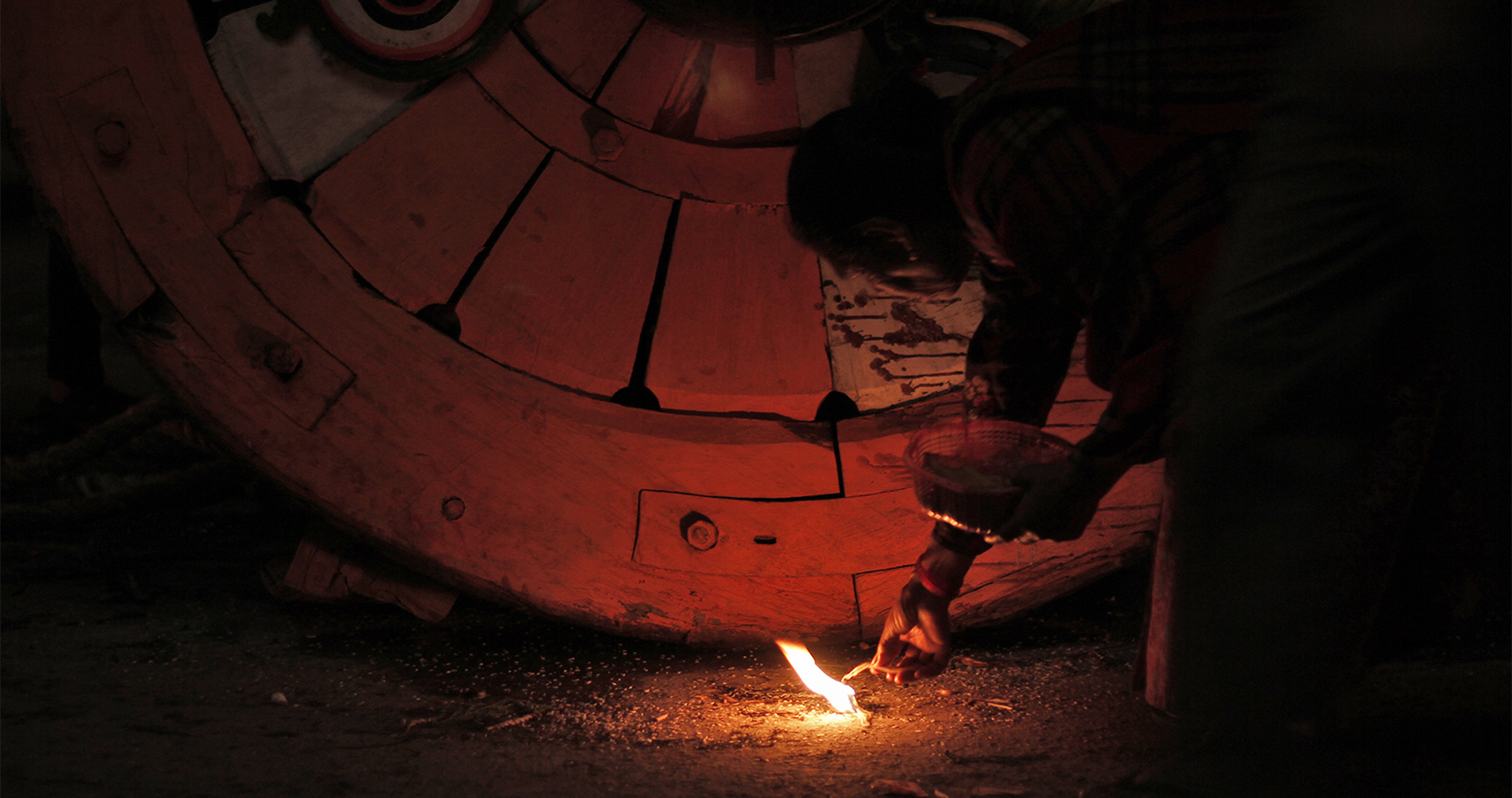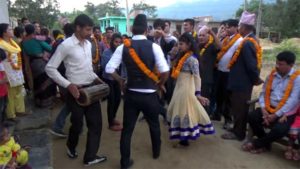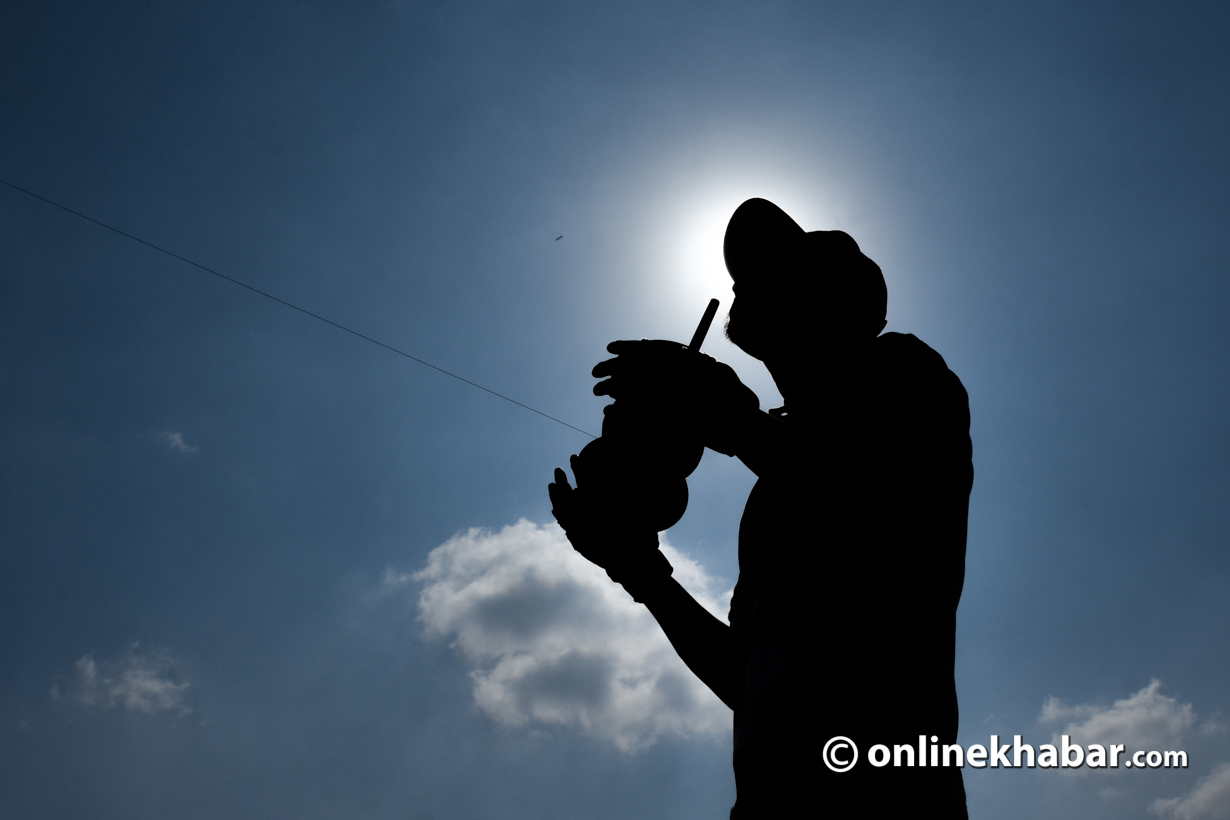The chariot festival of Machhindranath, one of the most-loved gods of the Newar people in Patan, begins with the advent of the Nepali New Year. Revered astrologers of the community get together and decide on a suitable moment to take the idol from its temple in Bungmati to Lagankhel, where it is bathed in holy water.
According to locals, it was in Lagankhel that the lord from Assam, India rested during his travel to a drought-stricken Patan. Once the lord is given a bath, the idol is placed on the throne of the chariot. But before that can happen, the Chitrakars (traditional painters) of Patan have a duty to perform. They paint the lords face and also the eyes on the wheels of Machhindranath’s chariot. The idol is simply carved and is made of sandalwood . It has four feet, a red faced, many-and wide eyes.
Although not many people agree on how the lord was born, many do agree that he came from an area near the modern day Assam in India. There are two legends that are associated with his life.
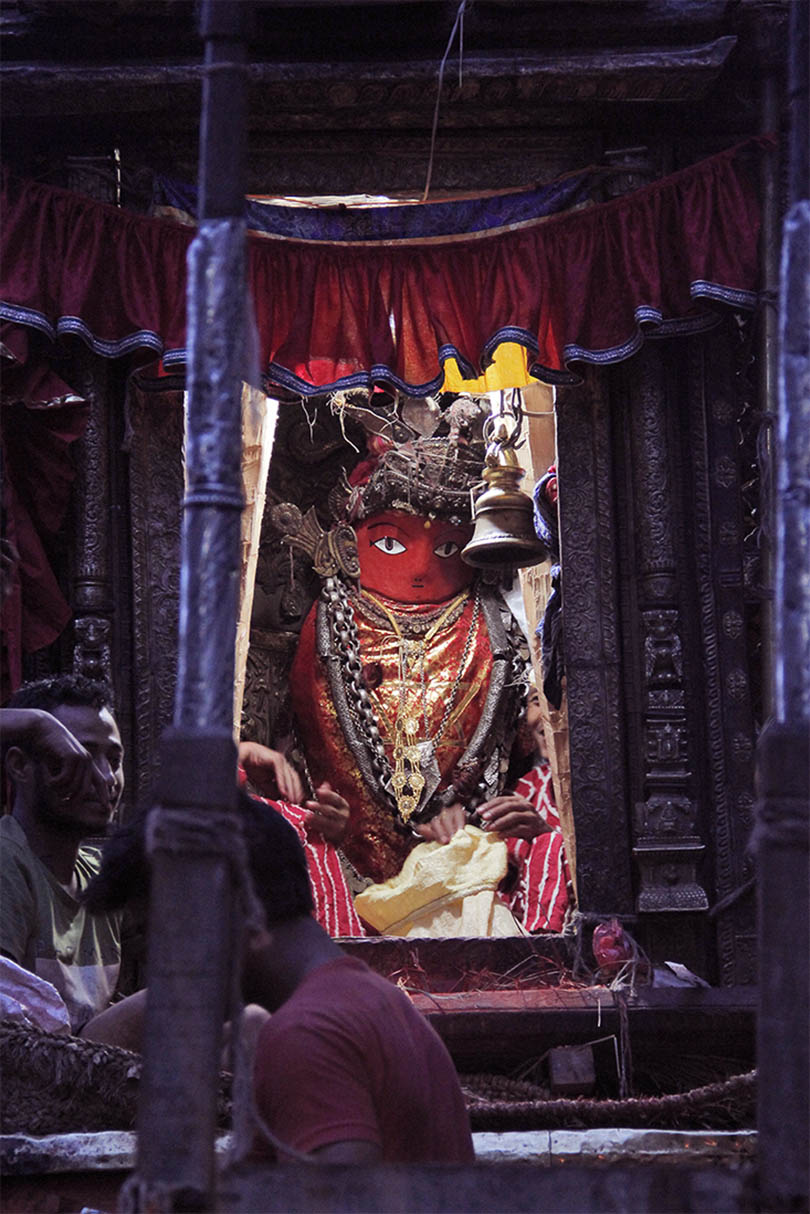
The first one says that Machhindranath (the Lord of the Fish) was eavesdropping on a conversation between the mighty Lord Shiva and his consort Shita on the topic of yoga. Machhindranath, who had taken the form of a fish, was caught. Mahadev was furious, and wanted to curse the fish. But the fish transformed into the Buddhist god Lokeswar, and Shiva was spell-bound by him.
The second tale says that a Brahmin woman gave birth to a son on an inauspicious day. The day was so bad that she cast her new-born into the sea. The boy was swallowed by a great fish. Lord Shiva learned about this and saved the child (therefore the name ‘Machhindra’).
Machhindranath, many historians say, was the guru of another sage Gorakhnath, who visited the ancient city of Patan during the reign of the Lichhavi King Narendra Dev. Gorakhnath felt he was not given due respect by the people of Patan. He caused a drought in the city.
According to legends, he rounded up the rain-bringing Snake Gods, and sat on them. He then went into a deep meditative trance.
As drought hit the city hard, the people of Patan came up with an idea. The only way to make Gorakhnath stand, and therefore release the snakes, would be to call his guru Machhindranath. When his guru would come, Gorakhnath would have to stand to show his respect, and the snakes could easily escape.
The local people brought Machhindranath from Assam, and things went according to plan. Patan received rain after a long spell of drought. Machhindranath became a local hero, and the city’s rain-maker.
Following the rain, the people of Patan organised a parade for Machhindranath and his travel companion and uncle (some say father) Minnanth. They were taken around the city on chariots, and people gathered to see them, and worship them.
The tradition continues till this day.
***
Read also
Meet the soldiers who ‘call the shots’ in Nepal’s city of festivals



